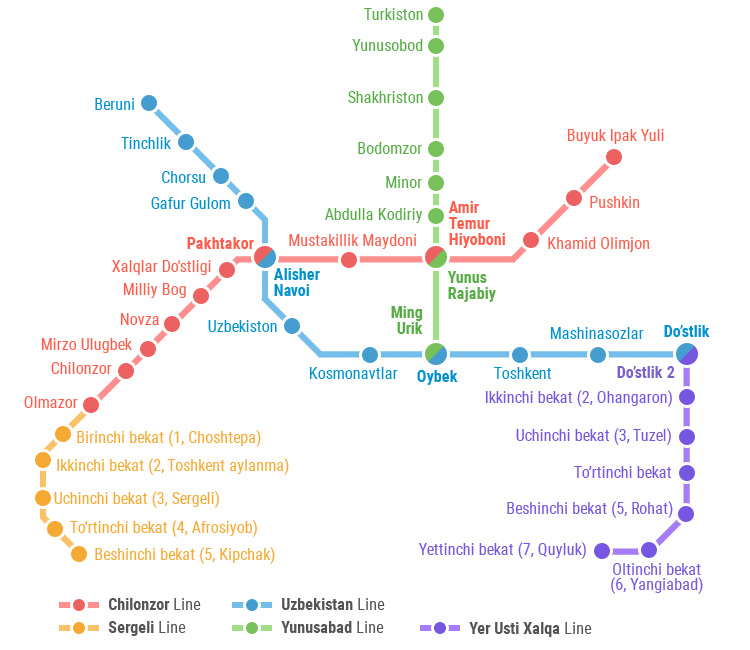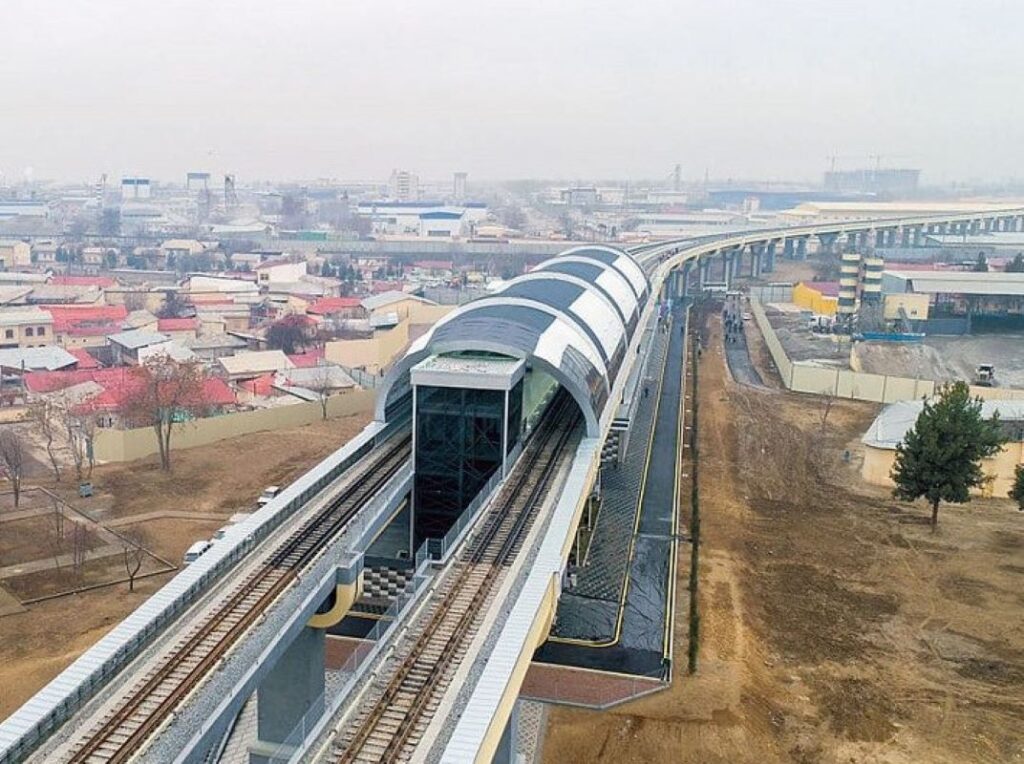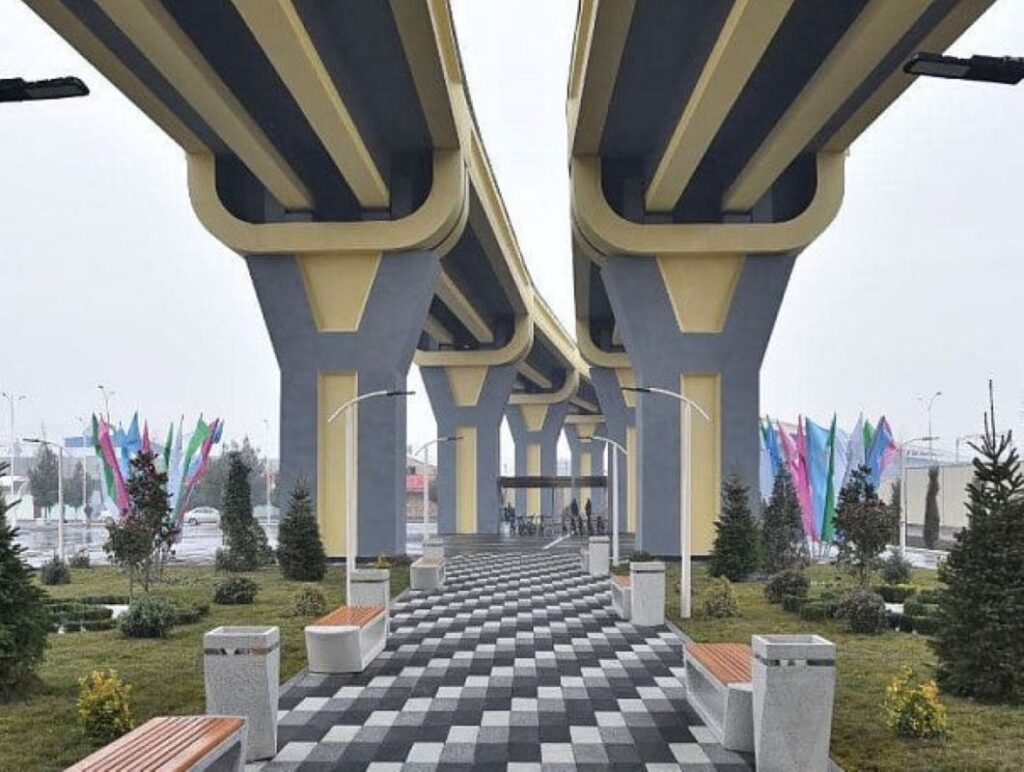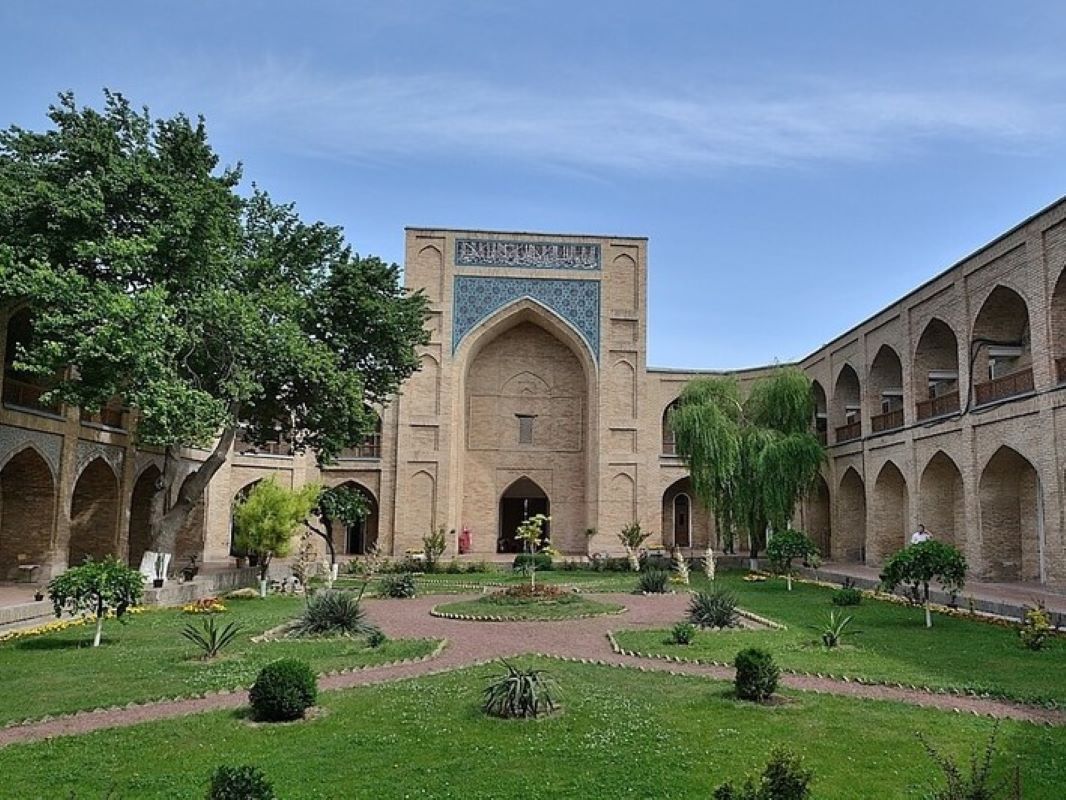The Tashkent Metro is the only subway in Uzbekistan, the first in Central Asia. Today Tashkent is the modern capital of Uzbekistan, in which there are practically no ancient architectural landmarks left, such as Samarkand, Khiva or Bukhara can boast. But even here, in the most densely populated city not only in the republic, but throughout Central Asia, there are its own attractions. One of them is the Tashkent metro.
After opening in 1977, it became the seventh in the USSR and in the post-Soviet space after the Moscow, Leningrad, Kiev, Tbilisi, Baku and Kharkov subways. In terms of the length of the operated lines, it ranks 68th in the world and third among the subways of the former USSR
Unlike most former Soviet metro stations, the system is shallow (its counterpart is the Minsk Metro). From 1980 to the early 1990s, it was named after V. I. Lenin[4]. The Tashkent metro consists of four lines with a length of 70.8 kilometers and 50 stations (31 underground, 15 aboveground and 4 above ground).
In August 2020, the 1st stage of the Ring Elevated Metro Line was commissioned – 7 stations with a length of 11.5 km.

In accordance with the decree of the President of the Republic of Uzbekistan “On measures for the implementation of the project “Construction of the Sergeli line of the Tashkent Metro” No.PP-2664 dated November 29, 2016, 5 stations of the new Sergeli metro line, 7.0 km long, were built and put into operation in December 2020.
The Sergeli massif is currently the largest residential area, which is currently connected to all districts of the city of Tashkent.
In accordance with these resolutions, 14 new metro stations with a total length of 21.4 km were built and put into operation in 2020.
Currently, the total length of the Tashkent metro is more than 58.5 km, 43 stations are operating:
Chilanzar line – 12 stations – 16.3 km
Uzbekistanskaya – 11 stations – 14.2 km
Yunusabad – 8 stations – 9.5 km
Ring elevated line -7 stations -11.5 km
Sergeli line – 5 stations – 7.0 km.
Before the commissioning of the new stations, the average daily passenger transportation was 200.0 thousand.
With the opening of new stations, the expected average daily passenger transportation will amount to 250-260 thousand passengers, taking into account compliance with quarantine measures.







